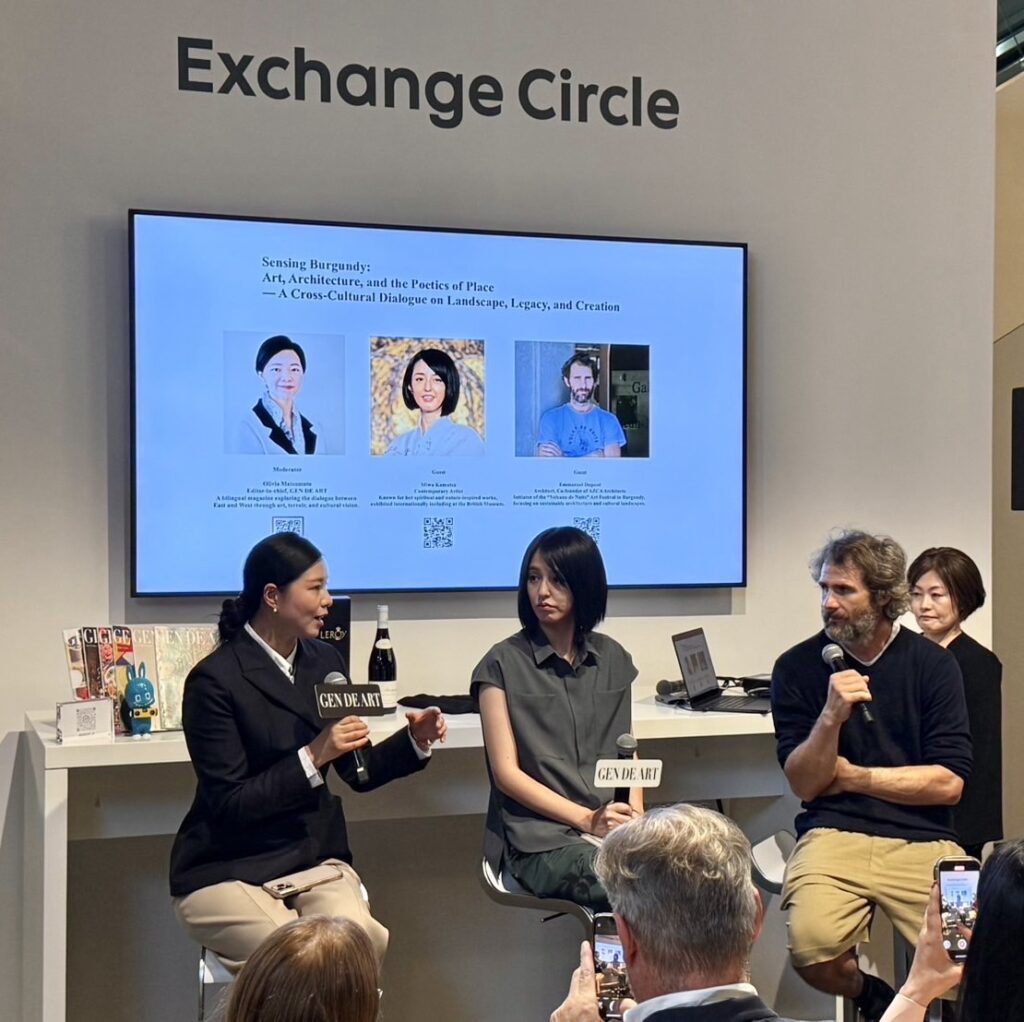BASEL, SWITZERLAND. June 23rd, 2025 – A special programme titled “Sensing Burgundy: Art, Culture and the Poetics of Place” took place on June 20, 2025, during Art Basel Basel in Switzerland. The event was hosted at the Exchange Circle stage and organised by GEN DE ART in partnership with the Vosne-Romanée Culture & Arts Center.
The session was moderated by Olivia Matsumoto, editor-in-chief of GEN DE ART. Known for her work at the intersection of contemporary art and regional cultural engagement, Matsumoto guided a series of one-on-one dialogues with two featured speakers: Japanese artist Miwa Komatsu and French architect Emmanuel Dupont.
Miwa Komatsu on Art, Nature and Spiritual Practice
The first half of the programme featured Miwa Komatsu, a contemporary artist recognised for works grounded in Shinto spirituality and nature-based symbolism. Komatsu has exhibited internationally, including at the British Museum.
The session opened with a short film introducing Komatsu’s visual practice. Speaking about her creative process, Komatsu described how she enters a meditative state to begin her work: “Painting is itself a form of meditation. As I sink into deeper consciousness, visions appear before me like a small theater.”
Komatsu also addressed the natural rhythms present in her work: “When my focus deepens, my movements repeat naturally. It feels as if my body synchronizes with the rhythm of nature. That’s what I perceive as true sustainability.”
She previewed her upcoming solo exhibition at the Sapporo Art Museum, which focuses on the extinct Hokkaido wolf (Ezo Wolf). Through this work, Komatsu aims to explore ecological memory and ancestral presence: “The Ezo wolf was driven to extinction by humans in 1889. I want to become a voice for the spirits that still dwell in nature.”
When asked about the global reception of her work, Komatsu pointed to the universal nature of prayer: “Prayer and painting may both be innate human languages – something that directly touches the heart.”
Emmanuel Dupont on Architecture and Cultural Memory
Architect Emmanuel Dupont, co-founder of Atelier Zéro Carbone Architectes (AZCA), spoke next. Based in Burgundy since the early 2000s, Dupont discussed how his practice integrates sustainability with regional identity.
Reflecting on the 10th anniversary of the Climats of Burgundy being designated a UNESCO World Heritage Site, Dupont commented: “It’s a time to reflect on the bond between humans and land. Architecture is a medium through which memory engages with contemporary life.”
Dupont also introduced Festival Volcan de Nuits, a regional arts programme he founded that combines art, sustainable construction, and local heritage. “Space can serve as a vessel for continuing the spiritual identity of the land.”
ENDS

